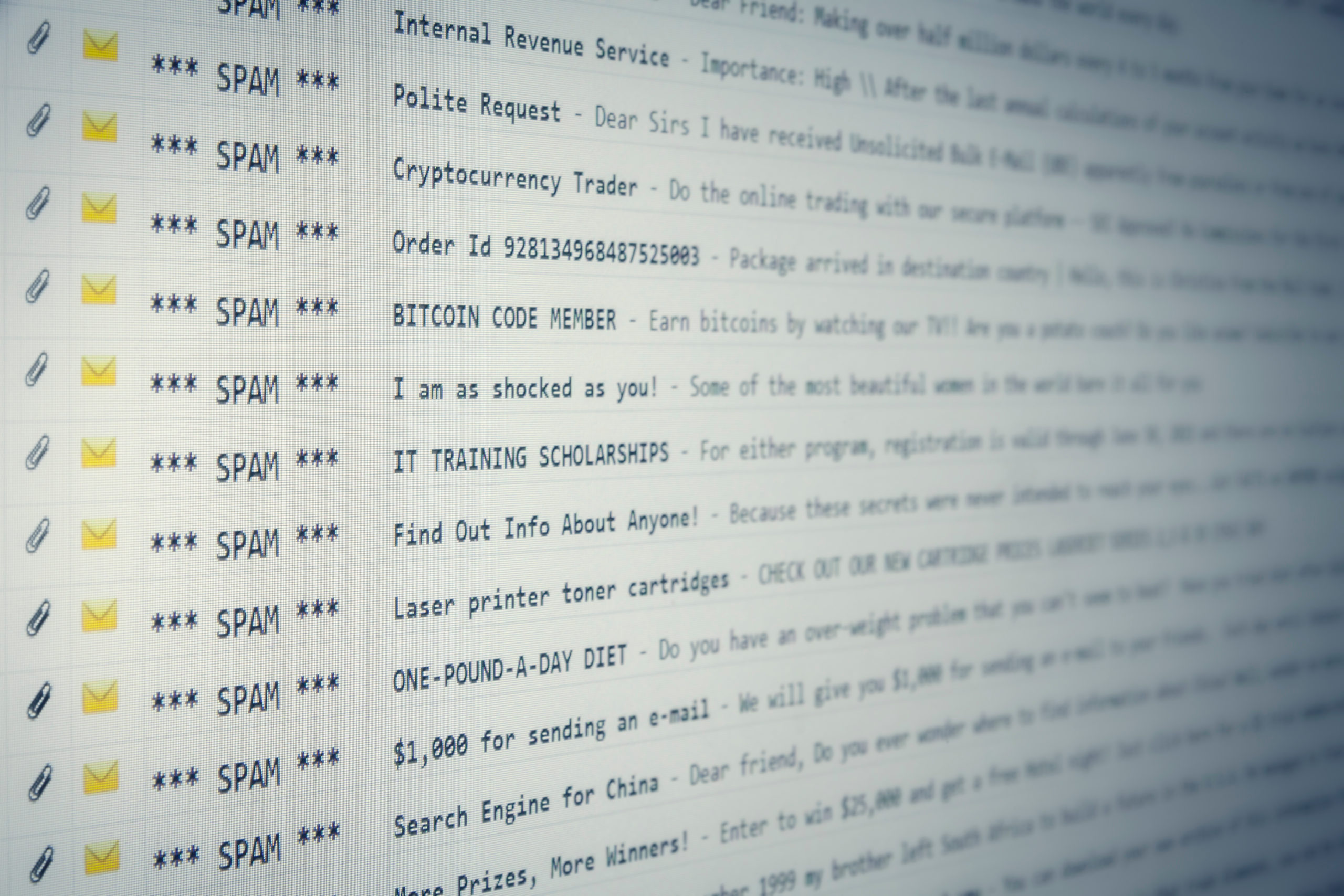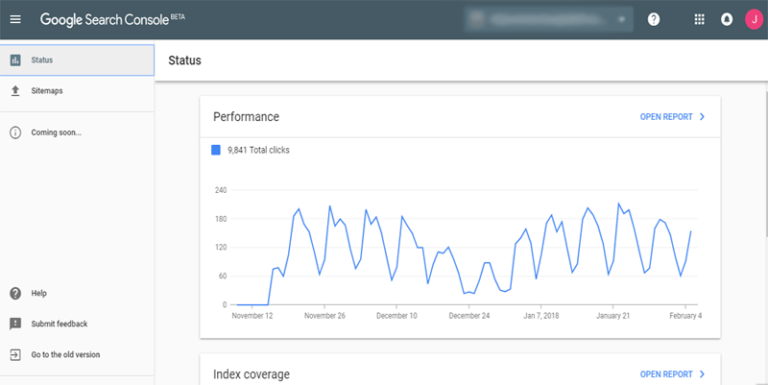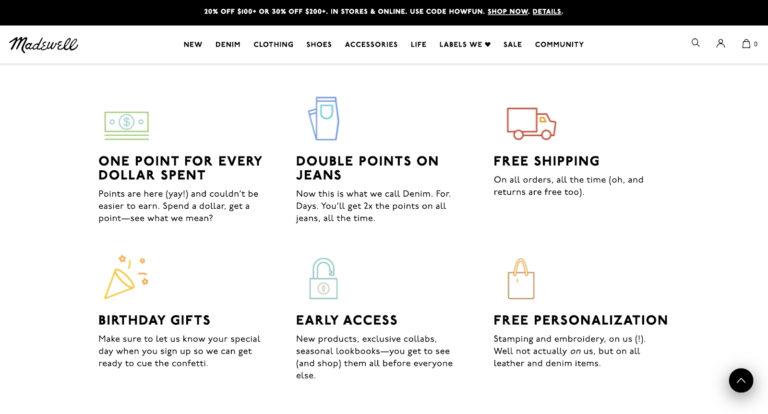

You go to all this effort to create beautiful emails for your customers, with the hope that they will be opened and read, resulting in traffic and sales for your eCommerce website.
But the reality is 2% of eCommerce emails experience hard bounce rates, according to the email marketing service Mailchimp. A hard bounce is when an email address fails, which can happen if your email is caught by the spam filter. According to Statista, spam messages accounted for 53.95% of email traffic in March 2020. That’s more than half of all emails!
To avoid your emails suffering the fate of the spam folder, you need to be vigilant. Read on for our tips on how to keep your apparel web store emails out of your customers’ spam folders.
Balance your content and limit use of risky words
First of all, think about what you’re putting in your emails. Spam filters analyze the content of your emails, so you must do the same when you’re creating them. Overuse of sales words like “free”, “prize”, “bonus”, “buy” and “promo” can be a red flag, so use these words sparingly. The same goes for emojis—think of the actual spam your personal inbox is subject to. Emojis in subject lines can be cute for some brands, if that is consistent with their personality and messaging, but they are best used with caution.
In the body of your emails, employ a balance of text and images, making sure to not feature too much of one or the other. This will also help keep the size of your emails smaller. And keep links to a minimum. When you do use them, ensure they go to reputable websites.
Once you’ve fine-tuned your content there’s one more important step: proofreading. This is a good chance to check your punctuation, and yes, that means taking out any extra exclamation marks that may have snuck in when you or your copywriter were feeling extra excited about your new collection. Multiple exclamation marks and all-caps words are hallmarks of spam emails, so save yourself from spam by using proper grammar.
Ensure your DNS records are correct
You can write beautiful marketing copy and select great images, but your emails won’t get very far if your DNS records are incorrect. The DNS, or Domain Name System, translates website domain names to IP addresses so that people’s browsers can load your emails properly.
Two DNS records that you must ensure are correct are SPF, or Sender Policy Framework, and DKIM, or DomainKeys Identified Mail. If you have an incorrect SPF record, you may be triggered for additional email filtering, which means your emails could be sent to spam. You should also have correct Reverse DNS (also known as a PTR record), as without it, many Internet Service Providers will block your emails.
Use a reliable email marketing service provider
Email service providers can not only help you manage the laborious task of sending hundreds of emails at a time, but they can also help you to gain credibility with your customers and subscribers’ mailbox providers. Look for one that provides customizable templates, audience segmentation features and analytics, such as Mailchimp, Constant Contact and even CRM systems like Salesforce, so that you can assess what’s working and keep fine-tuning your emails.
Popular services include Klaviyo, which offers powerful segmentation capabilities; Omnisend, which provides robust automation, and Rare.io, whose predictive software allows for smart email marketing. There are plenty more options out there, and the choices can seem overwhelming. Make sure to do your own internal research to figure out which email service provider is best for you and your audience.
Ask new subscribers to whitelist your emails
When you send a confirmation email to a new subscriber, ask them to add your “From” address to their address book, or contacts. This is a great, easy way to guarantee all of your future emails will get through to them, and not get caught in their spam filter. So it doesn’t hurt to ask!
You can also help your brand gain the all-important trust of your subscribers by using a straightforward name for your email “From” field, and sticking with it. Names like “[email protected]”, “[email protected]”, “[email protected]” or “[email protected]” all work well for the purpose of an email marketing list. You could get creative—Glossier uses “[email protected]”, and Reformation uses “[email protected]”. But considering big brands like Levi’s use the most simple “[email protected]”, you really don’t need to get all conceptual. Less is more! You want to build trust, so be straightforward.
Honor opt-out requests quickly
People don’t just consider spam to be those malicious, emoji-filled phishing schemes. Sometimes people flag emails as spam even if they know the sender. It could be that they have already unsubscribed and are continuing to receive emails, or that they felt they were receiving too many emails in too short a time frame, or that they deemed the emails to be irrelevant.
No one wants to feel harassed by a brand, and you certainly don’t want to create that feeling for your subscribers, so be mindful of best practices, and when you get opt-out requests, honor them as quickly as possible. Federal Trade Commission guidelines state that “You must honor a recipient’s opt-out request within 10 business days.” So if a subscriber opts out of your mailing list, it’s on you to ensure their request is honored as quickly as possible, within that time frame. And, of course, include hyperlinked text at the footer of your emails instructing your recipients how they can opt out in the first place.
As you can see, when it comes to avoiding having your apparel eCommerce emails marked as spam, there are many things to consider. But most important of all is to respect your customers. Put our advice into action and stay on brand, and you’ll stay out of their spam folders. And if you need more guidance, get in touch with us to devise a smart email marketing plan for your brand.
Get in Touch
Connect with one of our experts today to discuss your eCommerce needs!
Contact Us








